Amazon Web Services vs VMware vCloud
August 19, 2023 | Author: Michael Stromann
26
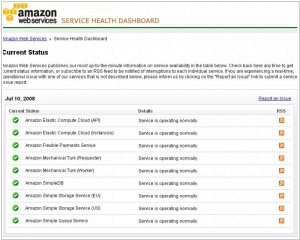
Access a reliable, on-demand infrastructure to power your applications, from hosted internal applications to SaaS offerings. Scale to meet your application demands, whether one server or a large cluster. Leverage scalable database solutions. Utilize cost-effective solutions for storing and retrieving any amount of data, any time, anywhere.
11
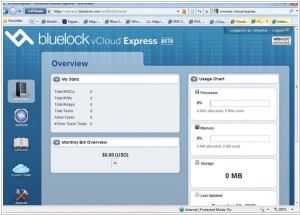
Start moving toward secure cloud computing with VMware vCloud solutions and services. Leverage the power of cloud computing while retaining the flexibility and open standards to support your existing IT infrastructure. Enabling IT as a service through cloud computing gives you a more efficient, flexible and cost-effective model.
Amazon Web Services (AWS) and VMware vCloud are two leading cloud computing platforms, but they differ in their offerings, architecture, and target audience. AWS is a comprehensive cloud platform provided by Amazon that offers a wide range of infrastructure services, including computing power, storage, databases, networking, and more. It provides organizations with the ability to build, deploy, and scale applications in a highly flexible and scalable environment. AWS operates on a shared responsibility model, where users have control over their applications and configurations. On the other hand, VMware vCloud is a cloud computing platform that extends VMware's virtualization technology to the cloud. It allows organizations to create and manage virtualized infrastructure in a cloud environment using familiar VMware tools and workflows. VMware vCloud is well-suited for organizations that have invested heavily in VMware virtualization technologies and want to extend their infrastructure to the cloud seamlessly.
See also: Top 10 Public Cloud Platforms
See also: Top 10 Public Cloud Platforms
Amazon Web Services vs VMware vCloud in our news:
2020. AWS launches Amazon AppFlow, its new SaaS integration service
AWS has recently launched Amazon AppFlow, an integration service designed to simplify data transfer between AWS and popular SaaS applications such as Google Analytics, Marketo, Salesforce, ServiceNow, Slack, Snowflake, and Zendesk. Similar to competing services like Microsoft Azure's Power Automate, developers can configure AppFlow to trigger data transfers based on specific events, predetermined schedules, or on-demand requests. Unlike some competitors, AWS positions AppFlow primarily as a data transfer service rather than an automation workflow tool. While the data flow can be bidirectional, AWS's emphasis is on moving data from SaaS applications to other AWS services for further analysis. To facilitate this, AppFlow includes various tools for data transformation as it passes through the service.
2019. VMware completes $2.7 billion Pivotal acquisition
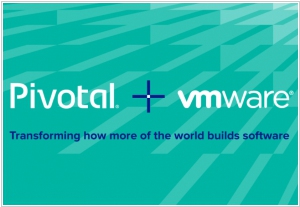
VMware has successfully completed the $2.7 billion acquisition of Pivotal, a private cloud platform. This acquisition serves as another crucial step for VMware as it strives to transition from solely a virtual machine company to a cloud-native provider capable of managing infrastructure across various environments. This addition aligns with VMware's recent acquisitions of Heptio and Bitnami, further reinforcing its strategic vision. The ultimate goal is to seamlessly integrate these developments into VMware Tanzu, a comprehensive management platform designed to unify Kubernetes containers and VMware virtual machines.
2019. AWS launches fully-managed backup service for business
Amazon's cloud platform, AWS, has introduced a new service called Backup, allowing companies to securely back up their data from various AWS services as well as their on-premises applications. For on-premises data backup, businesses can utilize the AWS Storage Gateway. This service enables users to define backup policies and retention periods according to their specific requirements. It includes options such as transferring backups to cold storage for EFS data or deleting them entirely after a specified duration. By default, the data is stored in Amazon S3 buckets. While most of the supported services already offer snapshot creation capabilities (except for EFS file systems), Backup automates this process and adds customizable rules to enhance data protection. Notably, the pricing for Backup aligns with the costs associated with using the snapshot features (except for file system backup, which incurs a per-GB charge).
2017. AWS launched browser-based IDE for cloud developers
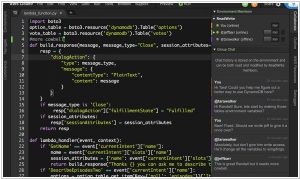
Amazon Web Services has introduced a new browser-based Integrated Development Environment (IDE) called AWS Cloud9. While it shares similarities with other IDEs and editors like Sublime Text, AWS emphasizes its collaborative editing capabilities and deep integration into the AWS ecosystem. The IDE includes built-in support for various programming languages such as JavaScript, Python, PHP, and more. Cloud9 also provides pre-installed debugging tools. AWS positions this as the first "cloud native" IDE, although competitors may contest this claim. Regardless, Cloud9 offers seamless integration with AWS, enabling developers to create cloud environments and launch new instances directly from the tool.
2017. AWS introduced per-second billing for EC2 instances
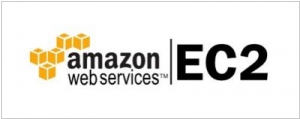
In recent years, several alternative cloud platforms have shifted towards more flexible billing models, primarily adopting per-minute billing. However, AWS is taking it a step further by introducing per-second billing for its Linux-based EC2 instances. This new billing model applies to on-demand, reserved, and spot instances, as well as provisioned storage for EBS volumes. Furthermore, both Amazon EMR and AWS Batch are transitioning to this per-second billing structure. It is important to note that there is a minimum charge of one minute per instance, and this change does not affect Windows machines or certain Linux distributions that have their own separate hourly charges.
2017. AWS offers a virtual machine with over 4TB of memory
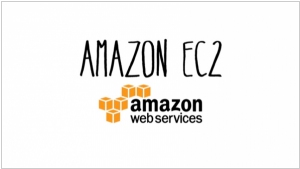
Amazon's AWS has introduced its largest EC2 machine yet, the x1e.32xlarge instance, boasting an impressive 4.19TB of RAM. This represents a significant upgrade from the previous largest EC2 instance, which offered just over 2TB of memory. These machines are equipped with quad-socket Intel Xeon processors operating at 2.3 GHz, up to 25 Gbps of network bandwidth, and two 1,920GB SSDs. It is evident that only a select few applications require this level of memory capacity. Consequently, these instances have obtained certification for running SAP's HANA in-memory database and its associated tools, with SAP offering direct support for deploying these applications on these instances. It's worth mentioning that Microsoft Azure's largest memory-optimized machine currently reaches just over 2TB of RAM, while Google's maximum memory capacity caps at 416GB.
2017. VMware Cloud is now live on Amazon Web Services

Last autumn, VMware and AWS announced a strategic partnership, and now they have unveiled a unified solution for enterprises called VMware Cloud on AWS. VMware Cloud on AWS offers customers a seamlessly integrated hybrid cloud environment that maintains consistent architecture, capabilities, and operational experience across their on-premises vSphere-based infrastructure and AWS. Although AWS operates its own virtual machines (VMs), they differ from those used by VMware in data centers. This disparity poses management challenges for companies seeking to utilize both platforms. By enabling organizations to migrate to AWS while retaining their VMware VMs in the public cloud, they can enjoy the benefits of both worlds without encountering management complexities.
2015. VMware will make Google Cloud Platform available to its customers
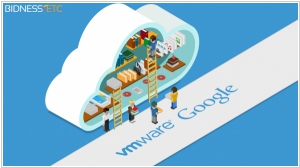
Google and VMware have joined forces to offer selected services from the Google Cloud Platform to VMware customers through vCloud Air, VMware's hybrid cloud platform. Later this year, vCloud Air users will gain access to Google's BigQuery analytics, Google Cloud Storage, as well as Google's Datastore and DNS services. Other Google services may also become available in the future. This collaboration can be seen as a win for both companies. VMware gains four valuable Google services, including the robust BigQuery analytics, which can help attract enterprise customers. Meanwhile, Google has the opportunity to showcase its top-notch intellectual property to the enterprise cloud users it seeks. Google aims to strengthen its hybrid cloud offerings, while VMware aims to demonstrate its cloud platform's compatibility with major players like Amazon Web Services (AWS).
2014. AWS now supports Docker containers
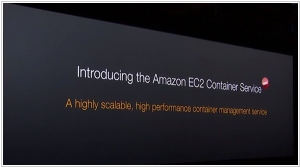
Amazon has announced the preview availability of EC2 Container Services, a new service dedicated to managing Docker containers and enhancing the support for hybrid cloud in Amazon Web Services. This offering brings forth a range of benefits, including streamlined development management, seamless portability across different environments, reduced deployment risks, smoother maintenance and management of application components, and comprehensive interoperability. It is important to note that AWS is not the first cloud provider to provide support for Docker's open-source engine. Google has recently expanded its support for Docker containers through the introduction of its Google Container Engine, which is powered by its own Kubernetes and was announced just last week during the Google Cloud Platform Live event. Furthermore, Microsoft had previously announced its support for Kubernetes in managing Docker containers in Azure back in August.
2014. VMware's cloud to support Docker, Google and Pivotal containers
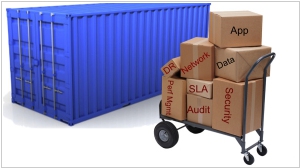
VMware is collaborating with Docker, Google, and Pivotal to ensure seamless compatibility between container technology and its virtualization technology. This joint effort will enable developers and operations staff to utilize the Docker Engine alongside VMware's vSphere hypervisor and vCloud Air environment. VMware will also engage in collaborative projects with Docker on various open-source container initiatives within the Docker platform. The company is committed to ensuring that future Docker projects seamlessly integrate with the broader VMware platform. Additionally, VMware's software will effectively support Google's Kubernetes container management system. In its partnership with Pivotal, VMware has already been leveraging containers in conjunction with virtual machines as part of its application development platform since 2011.




